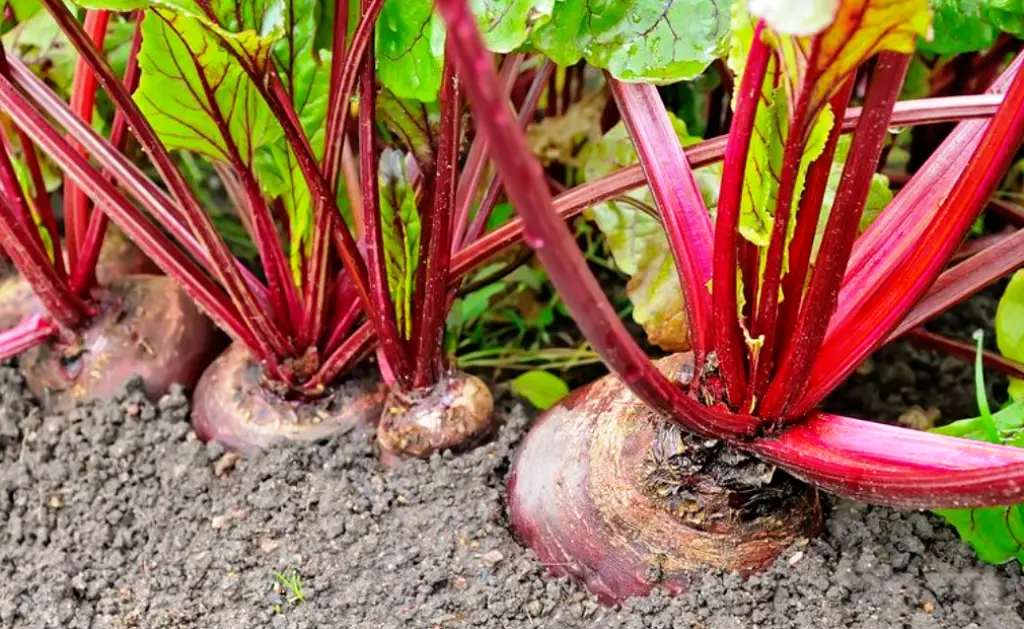
Beetroot Farming – Necessary Steps For Higher Profits
Beetroot is a fruit that can be consumed as a vegetable after or without cooking. Beetroot is also a sweet vegetable because it tastes mildly sweet. Its fruits are found inside the soil, and its leaves are used as vegetables. Many types of nutrients are present in Beetroot, which are very beneficial for the human body.
Doctors also recommend consuming Beetroot to cure anaemia, indigestion, constipation, cancer, heart disease, gall bladder disorders, piles and kidney disorders. Moreover, Beetroot is used as salad, juice and vegetables. Therefore, there is a lot of demand for Beetroot, so farmer brothers can earn well by Beetroot farming.

Beetroot Farming Essential Steps
Beetroot Farming Suitable Soil
Sandy loam soil is required for Beetroot farming. Therefore, its production should not be carried out in waterlogged land. In the event of waterlogging, the problem of fruit rot increases. Thus, the pH value of the land should be between 6 to 7 in Beetroot farming.
Climate For Beetroot Farming
Cold regions are considered suitable for Beetroot farming, and the winter season is considered very good for the development of its plants. Beetroot crops do not require much rainfall so excess rain can affect their yield. Beetroot plants need a normal temperature to germinate, and 20 degrees is suitable for its development.
Field Preparation In Beetroot Farming
Before starting the Beetroot crop, its field should be prepared well. For this, the area should be deeply ploughed by a Force tractor. After this, the area should be left as it is for some time so that the soil gets sunlight properly. Since beetroot plants grow by living on the land’s surface, their roots cannot absorb mineral substances in greater depth. Therefore, a good amount of fertilizer should be given while preparing the beetroot field.
By putting 15 carts of old cow dung manure in the ploughed field, do two to three oblique ploughing through the cultivator and mix the manure well in the soil. After mixing the waste in the soil, the area should be ploughed by applying water. After this, the field should be left like this for 4 to 5 days. Then, when the field’s soil starts appearing dry from above, do intensive ploughing with the help of a rotavator.
After this, plough the field by a plank, due to which the land will become flat, and there will be no problems like water logging. After preparing the field, the med should be prepared for planting beetroot plants. Nitrogen 40 KG, Phosphorus 60 KG and 80 KG of Potash per hectare should be sprinkled at the time of last ploughing for chemical fertilizer in the beetroot field.
Beetroot Farming Transplanting Method And Season
The cold climate is considered suitable for the planting of beet seeds. For this, the planting of its seeds should be done in the months of October and November, and we can use an Indo Farm tractor. In planting the seeds, one should buy an advanced variety of beetroot seeds and treat them before planting the seeds, which reduces the risk of plant diseases. About 8 kg of seeds are required in a one-hectare field.
Planting of beetroot seeds can be done on both flat and med land. For planting on flat land, beds should be prepared by keeping a proper distance in the field, keeping a distance of one foot in these beds, and seeds being sown in rows. In this, a distance of one foot between each row and each seed should be planted at a distance of 20 to 25 cm. Moreover, if you want to plant its seeds in the meadow, make sure to keep a distance of one foot between the seeds of each med and 15 cm between each seed.
Beetroot Plants Irrigation
Beetroot plants need moisture to germinate well. That’s why its first watering should be done just after sowing the seeds, and after seed germination, the amount of water should be decreased. Irrigation should be done in 10 days to save the Beetroot plants from waterlogged conditions.
Weed Control
Chemical and natural methods are used to control weeds on Beetroot plants. If you want to control the weed chemically, you should spray the appropriate amount of pendimethalin immediately after seed planting. After this, lesser weeds appear in the field. If you want to do weed control in the field naturally, you should do weeding after 15 to 20 days of seed planting. After this, weeding should be done occasionally when weeds are seen in the field.
Beetroot Harvesting
Beetroot plants are ready to yield in three to four months. When its fruits ripen, the leaves of the beetroots start to appear yellow. At that time, its fruits should be taken out of the soil. Before digging the fruits, some water should be applied in the field so that extracting the fruits from the ground becomes easy. After digging the fruits, wash them thoroughly and clean the soil. Then, the Beetroot should be dried well in a shady place and ready to sell commercially.
Yield And Benefits In Beetroot Farming
Beetroot plants give a yield of 150 to 300 quintals per hectare on the basis of different varieties. The market price of Beetroot varies between 20 to 50 rupees depending on the variety and fruit. Farmer brothers can earn Rs. 2 to 3 lakh by cultivating beetroot in a one-hectare field.